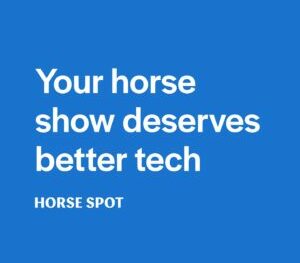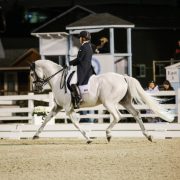Can’t Keep Her Down: Charlotte Merle-Smith’s Will To Ride
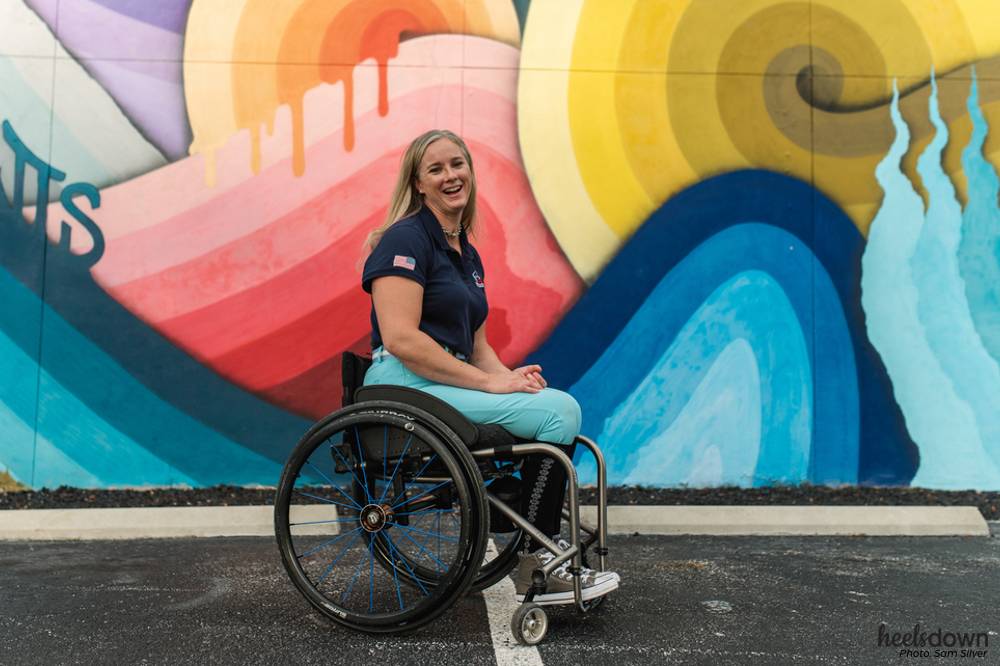
Charlotte Merle-Smith was checking all the boxes.
She’d won the one-star at the North American Youth Championships her first time out. She secured scholarships to train with eventing legend, Phillip Dutton. She had been a working student at elite farms across the globe, learning under the tutelage of Jan Byyby, Paul Donovan and Carol Gee.
Charlotte wanted to represent her country one day at the Olympic Games. And she was well on her way to doing it, until a terrible accident in late 2007 left her paralyzed and in a coma.
A freak four-wheeler accident paralyzed Charlotte from the waist down for the rest of her life.
“You can do something 10 times in a row, but it’s the 11th time is when something goes wrong,” said Charlotte, now 37, about her accident 12 years ago.
“I’m not a crier. But the one time I can think of in my life where I ugly cried, was the day I realized I wouldn’t be able to ride in the same capacity ever again.”
Even during her lowest of lows, Charlotte knew she would ride again. She’d come to terms with knowing she’d never return to the (now) three-star level of eventing, but she was determined to find a way to clamor her way back into the saddle.
“I had a pretty good thing going for me up until that point. I had been very fortunate,” Charlotte said, reflecting on her young career. “But I always knew I was going to ride again. Some way, somehow.”
Adjusting to a new life
Charlotte returned to her family’s farm in Vermont to continue recovering and adjusting to a new life. Her parents would put her in the John Deere Gator and drive her out to the pasture so she could see her since-retired event horse, Ben.
The first time she climbed back onto the back of a horse was just a few months later.
“Ben was the type who could never stand still at the mounting block,” Charlotte said of her event horse, who after taking her up the levels, also packed her mother around the preliminary level. He’d come out of retirement a third time to be Charlotte’s first para-dressage mount. “But when we brought him out to stand after my accident, he was always still.”
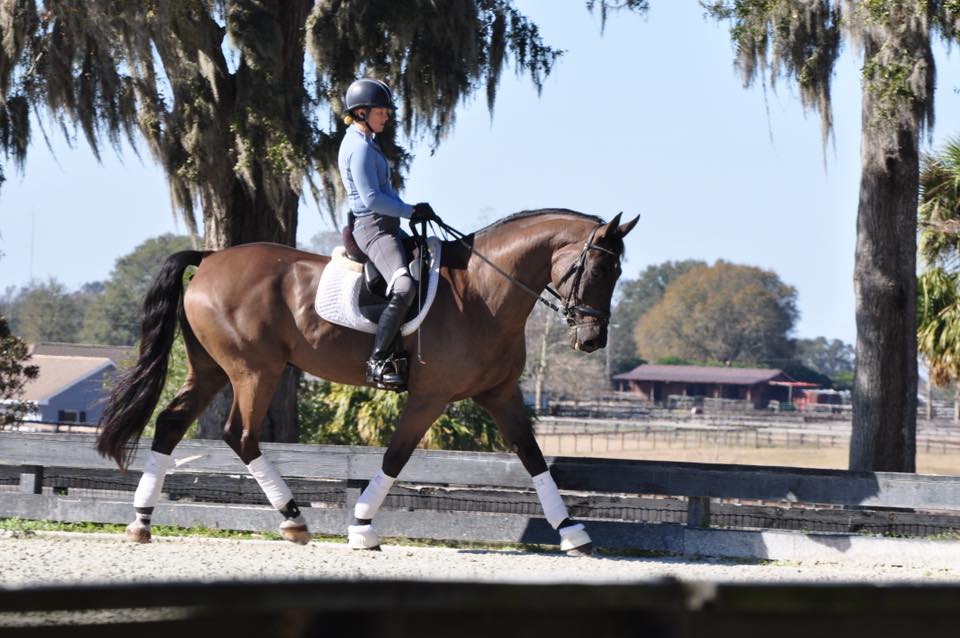
It was an adjustment for Charlotte to find her balance in the saddle. And it was an adjustment for her horse, too. All the cues he knew that came from leg pressure would have to be rewired. In those early days, Charlotte spent most of her time just walking around the cross-country field in a western saddle.
But Charlotte was intent on getting stronger. She began researching adaptive ways to ride. She started riding regularly at a therapeutic barn, until her ability and ambitions outgrew their services. But it was there that Charlotte felt a glimmer of hope for what she was capable of again.
“That place was amazing,” she described. “I’d go there, and my face would hurt by the end of it from smiling so much.”
Para-dressage training
Charlotte began working with dressage trainers who specialized in training para-riders, like Missy Ransehousen and Hope Carolyn Hand.
“Para riders don’t treat you like you’re handicapped. The treat you the same as everyone else. “
“I had never seen a dressage saddle retrofitted with all these new aids before,” Charlotte recalled, of her first time riding at Missy’s farm.
Charlotte and Ben (Sportsfield Twist) would go on to show at the international level in para events along the East Coast, including in Wellington. And they were competitive. The pair was long-listed for the 2012 Paralympic Games.
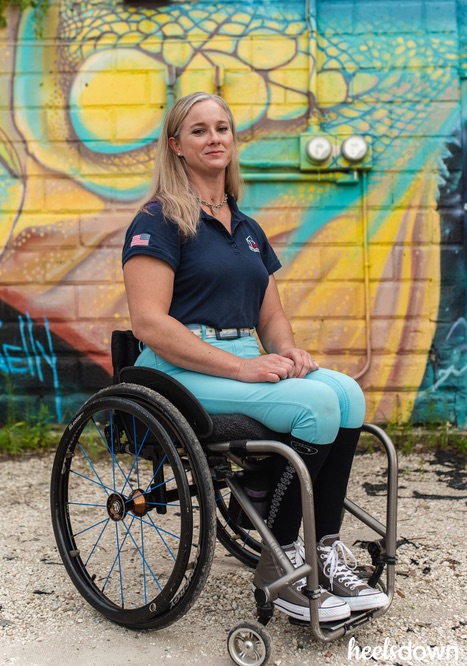
But Charlotte’s dreams of riding in London would be sidelined after she suffered her first pressure sore, which would keep her out of the saddle for months leading up to the trial events.
Charlotte’s mount, Ben, was put down shortly after due to a pasture accident. Describing him as her heart horse, Charlotte said Ben was a “very regal old man,” even at the end.
Finding the right horse
Charlotte still has big dreams to make it to the Paralympics one day and represent the USA. She’s been on the hunt for a new para-dressage horse for more than a year. But finding the right horse to fit her needs hasn’t been easy.
“Because I show mostly at the walk and trot, the horse has to have very correct, fancy movement,” she described. “But it also has be willing to be retrained. Obviously I can’t use my legs. I ride with two whips. And many horses get frustrated or confused.”
It takes a year just to retrain a horse to understand new cues that Charlotte uses in the saddle. Then it takes about another year to build up confidence and ability in the show ring, she said.
“Even the best horses are confused at first,” Charlotte explained. “I want to ride for my country, but I have to remind myself that I want to have a successful relationship with my horse, first.”
Competing in CrossFit
While she continues her search for the perfect next para-dressage mount, Charlotte refuses to get discouraged. She joined a CrossFit gym at her home in Ocala and is also working toward competing in the CrossFit Open – a nationally recognized competition that names “the fittest person on Earth” in various categories each year.
Charlotte’s already competed twice. She’s ranked fourth in the world for the adapted division.

“It’s cool to meet people outside of the horse world,” she said. “Para riders don’t treat you like you’re handicapped. The treat you the same as everyone else. But CrossFit people, it doesn’t matter who you are. They push you to try your hardest every time.”
Charlotte describes herself as competitive, and while she can’t be in the saddle, CrossFit is giving her that same goal-oriented outlet.
“I’m competing against myself,” she said, with the goal of always getting stronger. “Even though I can’t feel my body, I’m very aware of it. CrossFit is similar to dressage in that way – you have to have finesse to be successful.”

